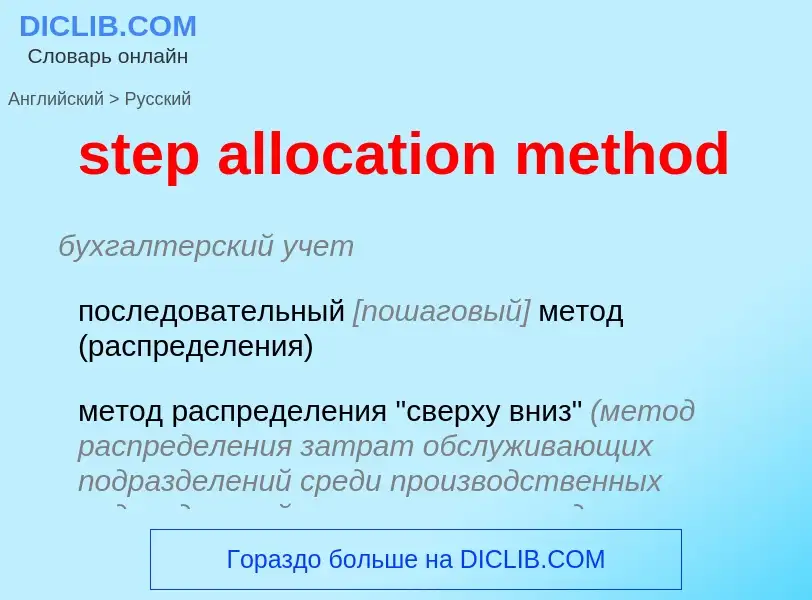Translation and analysis of words by ChatGPT artificial intelligence
On this page you can get a detailed analysis of a word or phrase, produced by the best artificial intelligence technology to date:
- how the word is used
- frequency of use
- it is used more often in oral or written speech
- word translation options
- usage examples (several phrases with translation)
- etymology
step allocation method - translation to English
бухгалтерский учет
последовательный [пошаговый] метод (распределения)
метод распределения "сверху вниз" (метод распределения затрат обслуживающих подразделений среди производственных подразделений, при котором определяются взаимозависимости обслуживающих и производственных подразделений; распределение затрат начинается с обслуживающего подразделения, оказывающего максимальное количество услуг другим подразделениям и потребляющего минимальное количество услуг, его затраты распределяются среди других обслуживающих и производственных подразделений, затраты второго обслуживающего подразделения, куда уже были распределены затраты первого, распределяются среди других обслуживающих подразделений, за исключением первого, и производственных подразделений и т. д.; таким образом, затраты всех обслуживающих подразделений в конечном счете распределяются на производственные подразделения)
синоним
Смотрите также
математика
распределение ресурсов
Definition
Wikipedia
In numerical analysis, the split-step (Fourier) method is a pseudo-spectral numerical method used to solve nonlinear partial differential equations like the nonlinear Schrödinger equation. The name arises for two reasons. First, the method relies on computing the solution in small steps, and treating the linear and the nonlinear steps separately (see below). Second, it is necessary to Fourier transform back and forth because the linear step is made in the frequency domain while the nonlinear step is made in the time domain.
An example of usage of this method is in the field of light pulse propagation in optical fibers, where the interaction of linear and nonlinear mechanisms makes it difficult to find general analytical solutions. However, the split-step method provides a numerical solution to the problem. Another application of the split-step method that has been gaining a lot of traction since the 2010s is the simulation of Kerr frequency comb dynamics in optical microresonators. The relative ease of implementation of the Lugiato–Lefever equation with reasonable numerical cost, along with its success in reproducing experimental spectra as well as predicting soliton behavior in these microresonators has made the method very popular.

